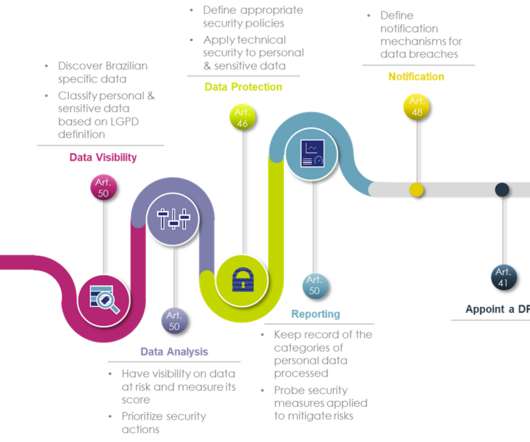Key steps on the road to LGPD compliance
Thales Cloud Protection & Licensing
FEBRUARY 18, 2021
The LGPD creates a legal framework for the use of personal data of individuals in Brazil, regardless of where the data processor is located. Visibility across the organization provides the accurate data it needs to make informed decisions. Reduced Risk of Exposure.













Let's personalize your content